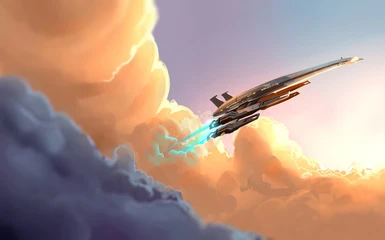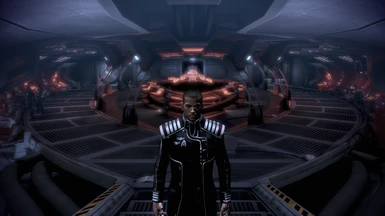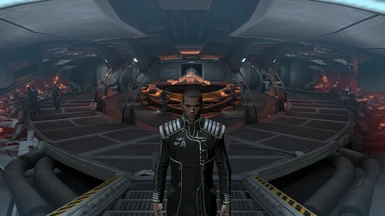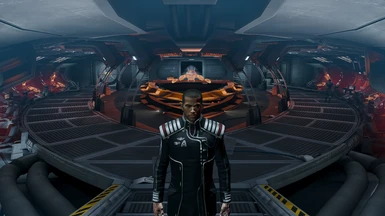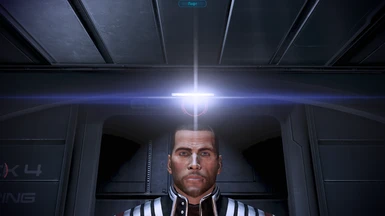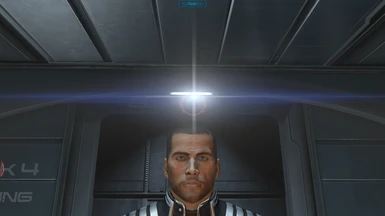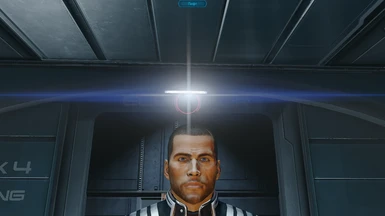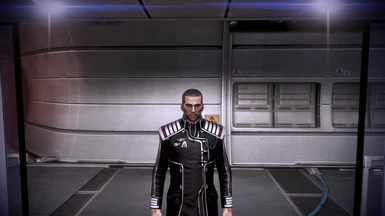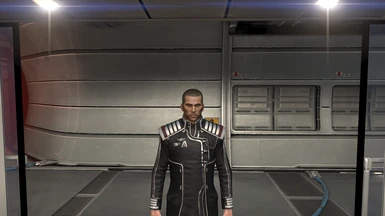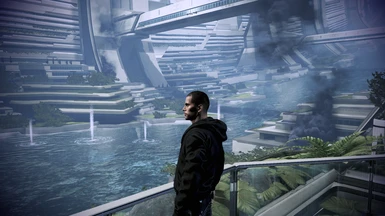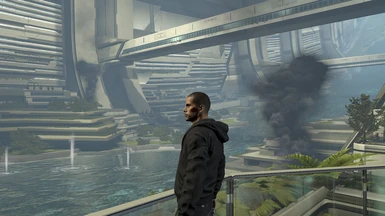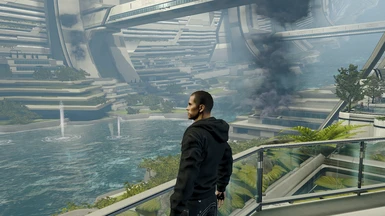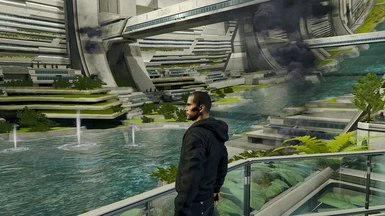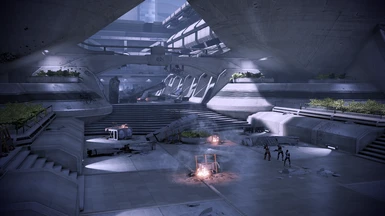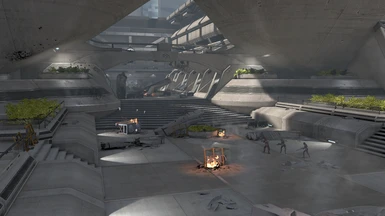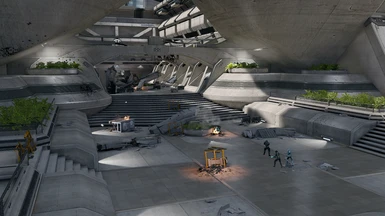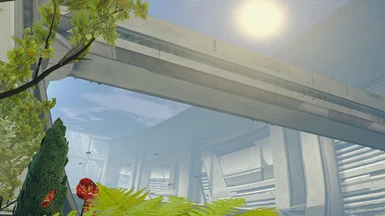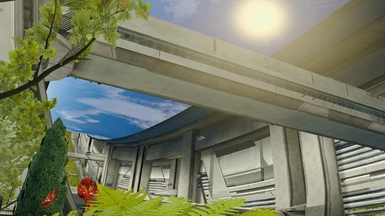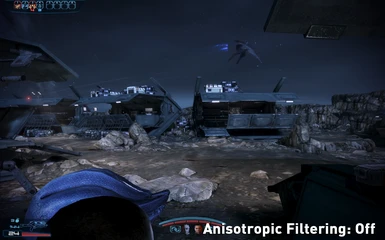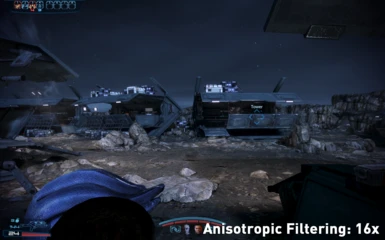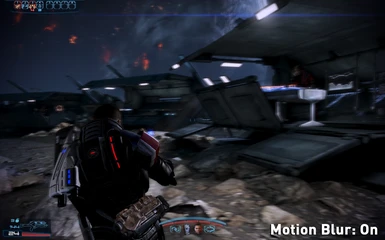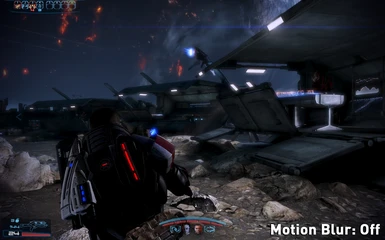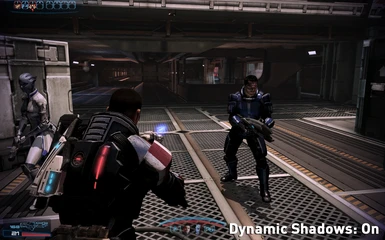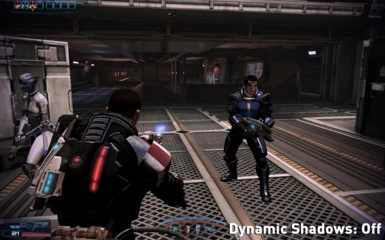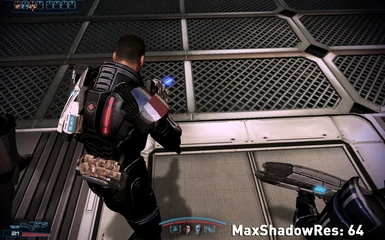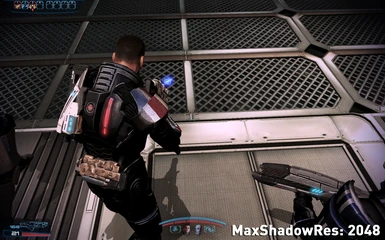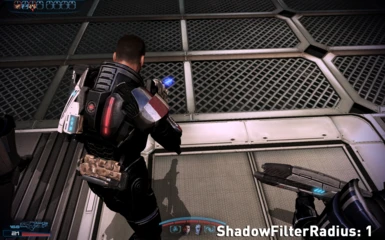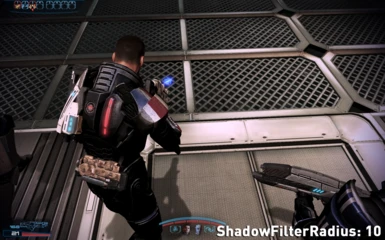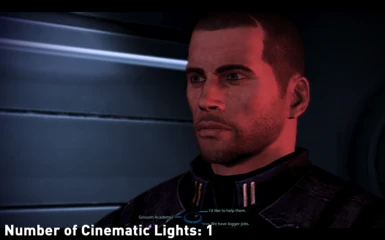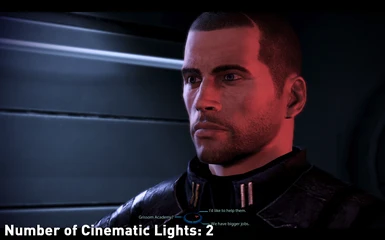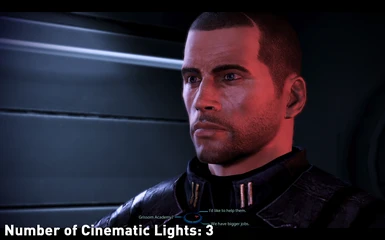Documentation
Readme
View as plain text
ME3 Graphics tweaks
========================= General info =========================
- In My documents the game creates folder 'BioWare\Mass Effect 3\' and config file GamerSettings.ini with all settings by default: when you launch ME3 first time and if you delete file or folder there.
- If you change Graphical settings (for example screen resolution) - all changes you apply will be stored in GamerSettings.ini;
Commenting code: [< ; >] semicolon before string: ;Variable=Value - comment prevent game engine from reading and executing it.
In this case game will run with default settings from: Mass Effect 3\BioGame\CookedPCConsole\Coalesced.bin\bioengine
========================= EDIT =========================
Download Notepad++
DO NOT USE Word, Wordpad or notepad - this will break game files.
- go to: C:\Users\<USER_NAME>\Documents\BioWare\Mass Effect 3\BIOGame\Config and open GamerSettings.ini;
- right-click on GamerSettings.ini > Edit with Notepad++
// How to compare two files in Notepad++ ? //
In Notepad++ add plugin "Compare" : main panel > plugins > plugin manager > show plugin manager > find plugin Compare > Install > (if program asks if you would like to update manager? - Yes, only once) >
> Open two GamerSettings.ini-s > main panel > plugins > Compare > select one of two files > Set as first to compare > switch to second file > main panel > plugins > Compare > Compare
Differences between two files - will be highlighted.
========================= Important options for game overall quality and performance =========================
bAllowPostprocessAA
ballowpostprocessmlaa
DynamicShadows
MaxShadowResolution
ShadowFilterRadius
shadowdepthbias
bAllowWholeSceneDominantShadows
maxwholescenedominantshadowresolution
ModShadowFadeDistanceExponent
bforcestaticterrain
MaxTextureSize
PoolSize
DisableHWShadowMaps
TEXTUREGROUP-s (required for displaying hi-res textures in ALOT)
==================================================
[SystemSettings]
Resolution=_1920x1080
ResX=1920
ResY=1080
These settings control the width (ResolutionX) and Height (ResolutionY) of your game display resolution.
While this can normally be adjusted using the in-game Resolution setting, you can use these values in case you can't access the in-game settings, or to try to force a custom resolution.
FullScreen=True // launch game fullscreen //
ScreenPercentage=100.000000 // in % //
UpscaleScreenPercentage=True
This setting only has an impact if the Screen Percentage setting is below 100%: the game will upscale the image to fill the entire screen,
although this results in a reduced image quality. If this option is set to False, and the Screen Percentage setting is set below 100%,
then the game image will only take up a portion of the screen. E.g. at 50% Screen Percentage and with this variable set to False,
the image will only take up 50% of the screen, and will be surrounded by black borders.
UseVsync=True // screen vertical synchronization //
Reduces screen tearing, although when enabled it looks although the game is running slower. this is because the fps are capped.
SmoothFrameRate=False // FPS smoother, lowers details to improve FPS when lagging. True for performance, false for quality. Set it True if you going to use this instead of Vsync //
MaxSmoothedFrameRate=62
MinSmoothedFrameRate=22
The game engine is capped to a maximum framerate, as determined by the value of the MaxSmoothedFrameRate variable (see below), which is 62 FPS by default.
This is done by the developers to prevent FPS spikes and thus provide smoother performance. However, by setting this option to =False,
you can completely remove this FPS cap. Keep in mind though that if you then find your framerate varying a great deal and causing jerkiness,
this option is best set back to True. Uncapping your FPS doesn't increase overall performance as such, i.e. if you got 35 FPS in certain areas with the cap,
you'll still do so without the cap. These settings control the framerate range between which the game engine attempts to smooth frames.
As covered under the bSmoothFrameRate setting above, if that setting is set to True, the framerate limit specified by the value of MaxSmoothedFrameRate
will be enforced. Although you can disable this FPS cap, ideally if you want smooth FPS but don't want the default 62FPS cap,
one thing you can do is to set the MaxSmoothedFrameRate to a higher value, e.g. =70 or =85. It's usually best to set your FPS cap to match your Refresh Rate,
since even with VSync disabled, any framerate above your monitor's refresh rate will simply be partial frames anyway.
There's no reason why uncapping your FPS will necessarily provide you a better gameplay advantage, and in fact it may do the opposite
due to greater FPS variability, so experiment to see if simply using a higher framerate cap is actually a better compromise of smoothness and performance.
Bloom=False // overbright light sources //
This setting controls the use of Bloom Lighting, which is a form of lighting that exaggerates the brightness and glow of lights, creating a slightly hazy, more atmospheric look.
With this option set to False, Bloom is not supposed to be used, however it doesn't seem to affect the lighting at all.
If you want to remove Bloom lighting you can set bUsePostProcessEffects to False (See further above), though this removes all post processing effects.
UseHighQualityBloom=False
As with Bloom above, this setting controls Bloom lighting effects, and if set to True uses a more accurate form of Bloom.
Disabling this may gain additional performance without a noticeable change in image quality.
LensFlares=True // don`t turn this off (=False) - you will loose possibility to interact with enviroment/world - all selectors and interaction points will dissapear //
Lens Flare is an effect seen when staring at a bright light source, such as a Sun, or gun muzzle flashes.
! console command to hide/show: Show LensFlares
FilmGrain=False
Film grain or granularity is the random optical texture of processed photographic film due to the presence of small particles of a metallic silver,
or dye clouds, developed from silver halide that have received enough photons. While film grain is a function of such particles (or dye clouds)
it is not the same thing as such. It is an optical effect, the magnitude of which (amount of grain) depends on both the film stock and the definition at which it is observed.
It can be objectionably noticeable in an over-enlarged photographic film photograph.
MotionBlur=False
Additional blurring effect seen when character turning around or moving rapidly (sprinting). Note that his option does not relate to the general blurring effects used in the game.
MotionBlurPause=False
Whether to allow motion blur to be paused.
AllowRadialBlur=False
Radial blur is a particular kind of blurring effect that originates at a single point within an image and blurs outwards (or inwards) from (or to) the point.
The word 'radial' itself actually means "Arranged like rays that radiate from, or converge to a common centre".
DepthOfField=False
Effect used to simulate the way in which objects within focus are sharper than objects outside our direct field of focus. It's primarily noticeable when zooming in on objects
with a sniper rifle - objects in focus will appear crisp, while surrounding objects will be blurred.
AmbientOcclusion=False // self-shadowing of the objects //
Screen Space Ambient Occlusion (SSAO) is an effect that approximates the attenuation of light due to occlusion. This is generally best used as a subtle effect,
in addition to standard global illumination, that darkens corners, crevices, or other features to create a more natural, realistic look.
Distortion=True
Distortion effects seen around things such as explosions or exhaust fans. For example when this is enabled, rockets or flak shells hitting objects
will show heat distortion around the impact, shock combo explosions will show distortions in the air surrounding them.
Disabling this option will remove such effects, improving performance particularly during heavy combat.
FilteredDistortion=True
Whether to allow distortion to use bilinear filtering when sampling the scene color during its apply pass.
DropParticleDistortion=False
Distortion effects complexity. Setting it to True may improve performance, at the cost of the visual quality of particle effects.
StaticDecals=True
Static decals are markings or posters in the game world which are placed on surfaces as decoration by the map designer, and are not created by players.
Setting this option to False removes these, and depending on the map the visual and performance difference may or may not be noticeable.
DynamicDecals=True
Dynamic decals are the marks left by players when using weapons on the surroundings. If this option is set to False, while weapons will still show impact marks initially,
some weapons will not leave dark scorch marks and the like on scenery. Disabling this option may improve performance particularly in heavy combat.
FogVolumes=True
Fog system in the game, and if set to False should disable volumetric fog.
DetailMode=3
Additional details on various maps, such as fog, ice and dripping water. Lowering this value to 1 or 0 removes such additional effects,
which can reduce atmosphere but may increase FPS and also may provide a gameplay advantage.
MaxMultisamples=8 // Anti-Aliasing - MSAA: x2/x4/x8 //
Multisampling samples max capacity. How much MSAA samples can be applied to game engine; Does not provide AA itself (either in DX9 or DX10 mode).
MaxAnisotropy=16 // Anisotropic filtering //
If you have Anisotropic selected under the Filtering Mode in-game setting, the setting here controls the actual level of Anisotropic Filtering (AF)
used in the game to make distant textures clearer. You can set a sample rate value ranging from 0 (0xAF, or no AF), to 4 (4x AF) which is the default
when Anisotropic is used, to 16 (16xAF) which is the maximum possible. The higher the sample rate, the lower your performance in return for crisper,
more detailed textures. Note that you can also enable Trilinear at the same time for even higher quality.
bAllowPostprocessAA=False // FXAA — Fast approXimate Anti-Aliasing //
FXAA - is known for its low requirements for the video system. Smoothes quite decently, but with drawback, which is noticeable, say, when compared with MSAA - blurring pictures.
It is more than average. Suitable for those who do not tolerate stairs, but can not afford the previous algorithms for smoothing.
ballowpostprocessmlaa=False // MLAA - MorphoLogical Anti-Aliasing //
MLAA - is a little-known algorithm for smoothing, developed by Intel. The only algorithm that works at the expense of the processor, not the video card.
It does not depend on the complexity of the scene, so you can guarantee the absence of "slowdowns" at any time. If you judge objectively, MSAA works a little slower, but also better.
If compare MLAA with FXAA, the first one will be slower, but the quality of the image will be the same without a noticeable blur.
Trilinear=False
Trilinear Filtering, which can improve the appearance of textures. Note that the general appearance of textures is more dependent on the MaxAnisotropy variable,
as well as the Texture Detail in-game setting. You can enable Trilinear Filtering with Anisotropic Filtering to get a higher quality of Anisotropic,
however this might increase stuttering and/or further reduce performance.
EnableHighPolyChars=True // Tessellation //
Increase polygon complexity of characters. In computer graphics, a polygon is used in modelling and rendering. They are defined in a database,
containing arrays of vertices (the coordinates of the geometrical vertices, as well as other attributes of the polygon, such as color, shading and texture),
connectivity information, and materials.
SkeletalMeshLODBias=-1
ParticleLODBias=-1
LOD Bias affects the clarity of textures and details, by determining how Mipmapped textures appear. Higher positive values make things blurrier and less detailed
but can improve performance, while lower values, including negative values, make things clearer at the cost of performance, and can also introduce further aliasing (jaggedness and shimmering) to the scene.
The SkeletalMeshLODBias setting relates to animations, while ParticleLODBias relates to particle effects. In practice the impacts of altering either of these settings is not significant,
but if you want the best quality try using a negative value for both, such as -1.
FloatingPointRenderTargets=True
Ability to enable HDR and Anti-Aliasing at the same time. The main impact of setting this option to False is that it alters the appearance of the game, removing certain post processing effects.
It provides a slightly different appearance to any other option, however there will be some minor visual glitches, such as light boxes around explosions.
DynamicLights=True
Lighting that interacts realistically with the game world. For example when this setting is enabled and you fire a ball from the shock rifle,
the blue light from the ball will reflect on surrounding surfaces as it passes them. This can noticeably reduce performance, so if you wish to increase your FPS,
particularly in heavy combat, then set this option to False.
DirectionalLightMaps=True
This technique allows improved image quality: surfaces will have additional depth, bump and detailing.
Setting this option to False can increase performance but reduce image quality by making surfaces appear flatter.
ballowlightshafts=True
Can be generated by directional lights to simulate the real world effect of crepuscular rays, or atmospheric shadowing of atmospheric in-scattering. These rays add depth and realism to any scene.
MaxCharacterCinematicLightingPasses=3
Number of Cinematic Lights: This setting determines the total amount of light that will be used simultaneously in scenes such as dialogs.
To select options available for 1, 2 or 3 light sources: the more of them, the more realistic the scenes will be backlight and shadow, but lower performance.
If you still find that the characters in the "cinematic" effects are too shaded, then increase the value of this setting.
EnableLightEnvSHLights=False // Spherical Harmonic lighting - enviroment + characters //
Real-time rendering techniques that can produce highly realistic shading and shadowing with comparatively little overhead.
All SH lighting techniques involve replacing parts of standard lighting equations with spherical functions that have been projected into frequency space using the spherical harmonics as a basis.
SHSecondaryLighting=True // Spherical Harmonic lighting - characters only //
SH lighting using preprocessed coefficients produces results that are beautiful but limited. Typically the lighting can change,
or the lit mesh can be rotated, but the mesh can't be translated or deformed without requiring a new set of per-vertex coefficients.
For example, it seems like you can approximate the diffuse lighting cause by a directional light source on a surface point, or parts of it,
by calculating the SH coefficients for all bands you're using (for whatever accuracy you desire) in the direction of the surface normal
and scaling it with whatever you need to scale it with (e.g. light colored intensity, dot(n,l),etc.).
DynamicShadows=True
Dynamic shadows on, set False to turn them off if you want better performance but less world and characters textures quality.
bAllowBetterModulatedShadows=True
This is not actually a card dependent option, it just prevents shadow glitches.
LightEnvironmentShadows=True
This setting controls whether the Light Environment, namely the general lighting in a level, such as sunlight, creates shadows.
When set to False, it disables many shadows similar to disabling the Dynamic Shadows setting, but it still does not remove the shadows for objects with fixed shadows,
such as buildings and terrain. This may improve performance but also reduces realism.
bEnableBranchingPCFShadows=True
This setting controls a form of soft shadow rendering called Branching PCF. If set to False, it results in the removal of soft filtered/smudged edges for shadows,
which in turn may increase performance but can also make shadows seem more blocky.
bEnableVSMShadows=False
Variance Shadow Maps are a simple technique allowing filtering, including some Gaussian blur for example, thus giving soft shadows (the blur does not depends on the distance from the occluder though).
The main drawback of the algorithm is the light bleeding artifact that occurs as soon as the scene complexity is too important.
bAllowWholeSceneDominantShadows=True
Allows cast shadows from mountains, buildings or trees to be cast by the sun or main light source. Set FALSE for increased performance.
maxwholescenedominantshadowresolution=4096
Max square dimensions (in texels) allowed for rendering whole scene shadow depths.
bAllowHardwareShadowFiltering=True
Whether to allow hardware filtering optimizations like hardware PCF and Fetch4.
benableforegroundselfshadowing=False
Self-shadowing allows non-static objects in the environment, such as game characters and interactive objects (buckets, chairs, etc.), to cast shadows on themselves and each other.
bEnableForegroundShadowsOnWorld=True
Setting it to True enables shadows on various areas of the map.
MinShadowResolution=32 // Must be set maximum to 64 and NO higher, otherwise might cause shadows glitches //
MaxShadowResolution=4096 // Set: 512/1024/2048/4096 //
These two settings determine the minimum and maximum possible values for shadow resolution in the game. The higher the minimum value, the darker and richer shadows should appear;
conversely the lower the maximum value, many shadows may appear less distinct and grey. Raising or lowering shadow resolutions may result in an impact on performance,
but more importantly, it can also result in visual glitches - for example any values above 512 for MinShadowResolution result in obvious glitches,
while very low values for MaxShadowResolution similarly result in glitches. In practice the difference between the default and higher values for these settings is minimal to none,
but if you wish to test it for yourself, set the minimum to 512 and the maximum to 2048 or even 4096 and see how it looks for you. You may get missing shadows
if the minimum is set higher than 64 however, so it may be best just to raise the maximum value.
MinPreShadowResolution=8
Sets min texels allowed for rendering shadow depths and fading. Must be less than ShadowFadeRes.
ShadowFadeResolution=32
Resolution in texels below which shadows begin to be faded out. Once the shadow resolution reaches MinShadowResolution it will be faded out completely. A value of 0 defaults to ShadowFadeResolution in SystemSettings.
ShadowFilterQualityBias=4
This setting controls depth calculations for shadows, and effectively determines the way Dynamic Shadows appear.
Higher values gradually reduce the number of shadows shown; a value close to 1.0 totally removes dynamic shadows on objects (but leaves static shadows as normal).
Lower values increase the number of shadows, however this can also result in glitches.
ShadowFilterRadius=0.01000 // shadows sharpness: less values = more sharpness //
This setting controls the shadow filtering in the engine, basically determining how sharp or dispersed the outlines of shadows appear.
The higher the value, the more 'blob-like' and faint shadows become, the lower the value, the less dispersed and sharper the outlines of shadows.
DepthBias=0.210000 // shadow draw distance from characters: greater values = greater distance //
This setting controls depth calculations, and effectively determines the way dynamic shadows are drawn.
Higher values reduce shadows - a value close to 1 totally removes dynamic shadows on objects (but leaves static shadows such as those of buildings),
and this may improve performance. Ideally if you just want to disable shadows, it's best to set the relevant shadow options to False - i.e. DynamicShadows and LightEnvironmentShadows.
shadowfadeexponent=0.0
This setting controls the distance at which shadows fade into/out of view. The higher the value, the shorter the distance from the object at which shadows fade in/out,
and also the fainter all dynamic shadows appear. For example at 0.5 most shadows will be almost invisible, while at 0.0 all shadows will be shown, even at long distances,
improving image quality at the cost of some performance.
OnlyStreamInTextures=True
The texture streaming system, or streamer, is the part of the engine responsible for increasing and decreasing the resolution of each texture.
This enables you to have good visual quality while managing the available memory effectively.
This is in part done with Mips, or Mipmaps, that are pre-calculated sequences of images for texture resolutions.
AllowSubsurfaceScattering=True
Mechanism of light transport in which light penetrates the surface of a translucent object, is scattered by interacting with the material and exits the surface at a different point.
The light will generally penetrate the surface and be reflected a number of times at irregular angles inside the material, before passing back out of the material at an angle
other than the angle it would have if it had been reflected directly off the surface.
TEXTUREGROUP_
Settings in this section relating to the Level of Detail (LOD) of different aspects of the game world, objects, characters, and lighting among other things.
These are essentially supposed to control the level of detail and quality of objects and textures as they recede into the distance.
Each has a MinLODSize, a MaxLODSize and LODBias which you can experiment with to alter image quality. By raising MinLODSize as well as MaxLODSize,
and lowering LODBias, you should be able to get better image quality. However in practice not only will the game crash if you use certain values,
there also appears to be absolutely no improvement in image quality even when correct values are used.
[Engine.Engine]
bsmoothframerate=False // Same setting as in [SystemSettings] //
MaxSmoothedFrameRate=62
MinSmoothedFrameRate=22
bUseTextureStreaming=True
The Unreal Engine 3 on which Mass Effect is based uses a streaming approach to loading up textures. If this option is set to False, textures won't be streamed in at all,
but instead most of the environment will be black due to a lack of textures.
AllowShadowVolumes=True
Shadow volume is a technique used in 3D computer graphics to add shadows to a rendered scene. A shadow volume divides the virtual world in two: areas that are in shadow and areas that are not.
benabletranslucenthairpass=True
Physical property of allowing light to pass through the material without being scattered.
bforcestaticterrain=True
This setting tells the game wether to make all ground polygons stay the same size and shape and angle no matter how far you are from it.
If you set this to false, the game will turn a very round hill of many polygons into a jagged hill of less polygons the further away you get.
[Engine.RenderDevice]
bUsePostProcessEffects=False
This setting controls a range of 'post processing' effects, namely effects which are overlaid on the main game image -
these effects include Film Grain, Motion Blur, Light Bloom and the Depth of Field effects which are visible throughout the game.
When this setting =False, all such effects will be removed, and the result - performance improvement, and a very clear though somewhat blander image.
Note that LensFlares are not affected by this setting.
[D3DDrv.D3DRenderDevice]
MaxTranslucencyLayers=4
Translucency opacity level;
MaxTextureSize=4096 // Set: 512/1024/2048/4096 //
Max capacity of textures resolution: if texture has and reaches its max resolution variant - it will be shown on screen, otherwise lower-res variant;
DisableHWShadowMaps=False
This option controls the hardware calculation of shadows, if True, then the task of calculating the shadows will be assigned to the processor, and not to the video card.
You can put True here if your processor is better than a graphics card and vice versa.
BIOPixelShaderVersion=ps_3_0
BIOVertexShaderVersion=vs_3_0
Pixel shaders, also known as fragment shaders, compute color and other attributes of each "fragment" - a technical term usually meaning a single pixel.
The simplest kinds of pixel shaders output one screen pixel as a color value; more complex shaders with multiple inputs/outputs are also possible.
Pixel shaders range from always outputting the same color, to applying a lighting value, to doing bump mapping, shadows, specular highlights, translucency and other phenomena.
Vertex shaders are the most established and common kind of 3D shader and are run once for each vertex given to the graphics processor.
The purpose is to transform each vertex's 3D position in virtual space to the 2D coordinate at which it appears on the screen (as well as a depth value for the Z-buffer).
Vertex shaders can manipulate properties such as position, color and texture coordinate, but cannot create new vertices. The output of the vertex shader goes to the next stage in the pipeline,
which is either a geometry shader if present, or the rasterizer. Vertex shaders can enable powerful control over the details of position, movement, lighting, and color in any scene involving 3D models.
[TextureStreaming]
PoolSize=2048
PoolSize the max VRAM of your GPU in MB. Sets the size in MB of the texture pool which all textures except render targets use.
possible values can be set:
1GB = 1024
2GB = 2048
3GB = 3072
and so on. When set to 0, the pool size will be unlimited.
Some sources tell that PoolSize must be: VRAM - 800 : if you have 2GB, set 1200;
And the others: VRAM in GB x 600 : if you have 3GB, set 1800;
MemoryMargin=20
Sets the of RAM to keep free, to be used as temp memory when streaming in new data, in MB.
MemoryLoss=0
Amount of memory to keep unavailable, not used in the UE3.X Engine. Leave "disabled" as being set to 0.
HysteresisLimit=20
Min 20 Max 30; Sets a limit on textures rendered when transitioning from one LOD to another, limiting spurious load/unload requests in seconds.
DropMipLevelsLimit=24
Min 4 Max 20; Sets the number of miplevels to drop (increase fudge) before uploading a texture LOD. Set >16 it increases GPU memory & file caching.
StopIncreasingLimit=20
Min 5 Max 20; Sets a memory limit for texture pop-ins (MIPS) in MB. Setting this higher with an increased poolsize will help pop-in issues.
StopStreamingLimit=12
Min 6 Max 12; Sets a memory limit for texture streaming in MB. Setting this higher with an increased poolsize will help smooth streaming.
MinEvictSize=12
Min 10 Max 12; Sets a memory limit for texture tiles that are mapped/pinned as necessary and then evicted as per cache rules. Set >10 to retain.
MinFudgeFactor=0.5
Min 5 Max 0.5; Sets a min margin of error for texture steaming. Anything higher than 1 means that textures don't fit & will be blurry.
FudgeFactorIncreaseRateOfChange=0.5
Min 1 Max 0.5; Tells when to throttle the rate of texture stream. Anything higher than 1.0f is bad. Set between 0.5 and 1.0 only.
FudgeFactorDecreaseRateOfChange=-0.1
Min -1.0 Max -0.1; Tells when to increase the margin of error rate for texture streaming. Anything lower than -1.0f is bad. Set between -0.5 and -1.0 only.
MinRequestedMipsToConsider=11
Min 0 Max 15; Sets the minimum # of MIPS requests in the texture update phase. Set >11 may increase down ratios, but can cause studdering.
MinTimeToGuaranteeMinMipCount=0
Min 5 Max 0; Sets a min time to eliminate the loading buffer and shows texture density at its max right away instead of loading it.
MaxTimeToGuaranteeMinMipCount=0
Min 12 Max 0; Sets a max time to eliminate the loading buffer and shows texture density at its max right away instead of loading it.
LoadMapTimeLimit=2
Min 10 Max 2; Sets a time limit for the pre-streaming texture blocking operation, making streaming more smooth.
LightmapStreamingFactor=0.02
Min 0.09 Max 0.02; Sets how aggressively lightmaps are streamed out. Smaller values <0.04 are more aggressive.
ShadowmapStreamingFactor=0.02
Min 0.09 Max 0.02; Sets how aggressively shadowmaps are streamed out. Smaller values <0.04 are more aggressive.
MaxLightmapRadius=9000
Min 500 Max 9000; Sets how wide an indirect sunlight/illumination lighting source spans, like the focus width of a flashlight.
Higher numbers result in illumination, not brightness and reduce shadow effects.
TextureFileCacheBulkDataAlignment=1
StaticTextureStreamingDistance=1
Sets a time limit on the file cache, forcing it to align cached textures with the current environment. Leave set to 1.
AllowStreamingLightmaps=TRUE // TRUE only if using TextureFileCache=TRUE //
Sets whether to allow lightmaps stream in and out based on player distance.
UsePriorityStreaming=FALSE
Sets a quality of service & priority to texture streams being drawn and compensates for stuttering / lag spikes,
but reduces framerate priority and only loads basic texture sets if set TRUE.
bAllowSwitchingStreamingSystem=FALSE
Sets whether to allow the game to switch stream rates to compensate for stuttering / lag spikes,
but reduces framerate priority and may cause more stuttering under certain conditions if set true.
UseDynamicStreaming=TRUE
Replaces streaming "triggers" with dynamic streaming volumes so the map can loaded while playing (reduces map load times), rather than having to wait it all out at once.
If set FALSE, you better have LOTS of RAM/VRAM.
bEnableAsyncDefrag=FALSE
Sets whether to allow Level streaming with asynchronous loading (out of order), which may cause uneven textures if set TRUE. Leave FALSE.
bEnableAsyncReallocation=FALSE // TRUE only if using bEnableAsyncDefrag=TRUE //
Sets whether to allow the relallocation of async textures in their priority stream.
MaxDefragRelocations=256 // use only if using bEnableAsyncDefrag=TRUE //
Sets the total # of defragmentations (time spent) for Async textures being relocated before scrubbing.
MaxDefragDownShift=128 // use only if using bEnableAsyncDefrag=TRUE //
Sets the total # of Defragmentations (time spent) for Async textures being relocated before reducing.
UseTextureFileCache=TRUE // reduces level loadings //
Texture caching has some advantages over memory mapping. For scenes with many large textures not all of them would fit into the virtual memory simultaneously.
In such case, game engine will unmap and re-map textures from memory on demand. However, memory mapping is a relatively slow operation.
On contrary to memory mapped textures, cached ones do not to occupy a large part of the virtual memory space. Texture tiles or pages are read from the image file on demand.
[DevOptions.Shaders]
bAllowMultiThreadedShaderCompile=True
CPU troubleshooting performance option.
ThreadedShaderCompileThreshold=4 //uncomment to use and set yours//
The number of physical CPU cores your processor has.
[Core.System]
StaleCacheDays=1 // Change by the number of days the file cache exists //
MaxStaleCacheSize=100
MaxOverallCacheSize=300
[Engine.ISVHacks]
UseMinimalNVIDIADriverShaderOptimization=False
If set to True, this setting can reduce stuttering and hitching on GeForce graphics cards. Once again, as primarily a troubleshooting option, it shouldn't be set to True unless necessary.
DisableATITextureFilterOptimizationChecks=False
This setting is ATI-specific troubleshooting option, and should only be set to False if you are having issues.
bInitializeShadersOnDemand=False
Set to True as a workaround if you are experiencing crashes with an Nvidia card. Otherwise it is best left at False for optimal performance.
[Engine.Physics]
NxPrimarySceneHW=True
Adds extra debris/decal effects.
[ISACTAudio.ISACTAudioDevice]
MaxChannels=64
This option controls the maximum number of individual audio channels used for sound in Mass Effect. Almost all modern sound cards support at least 32 channels;
Audigy series cards can support up to 64; X-Fi cards support up to 128. If you're having audio problems set this value to the maximum channels supported by your audio device,
or to try to improve performance or reduce audio glitches, try a slightly lower value, or just 32 if all else fails. Note though that if set too low you will get missing or glitching sounds.
[Engine.Console]
ConsoleKey=Tilde
Enables console, key: [< ` >]
switch to english keyboard layout (before launching the game) when you want to use console commands;
Auto generating sections - don't edit
[GamerSettings] - file version;
[SaveGames] - savegames loacation;
[AppCompat] - hardware configuration;
[SFXConsole] - console commands history (safe for deletion);
========================= Optional settings to add/edit =========================
Available values for all settings: 4/8/16/24/32/48/64/96/128/256/512/1024/2048/4096/8192/16384/32768/65536/131072/262144/524288/1048576;
Use:
UseVsync or SmoothFrameRate; https://answers.unrealengine.com/questions/90743/what-exactly-does-smooth-frame-rate-do.html
bEnableBranchingPCFShadows or bEnableVSMShadows;
bAllowPostprocessAA or ballowpostprocessmlaa; // alternative and best quality AA: enable Multisampling (MSAA) +\- Sparse Grid Supersampling (SGSSAA) in your videocard //
LensFlares=True
If set to False - this setting will disable selectors and interaction points;
To hide/show, use console command:
Show LensFlares
Post Process Effects: Depth of field, Bloom, Vignette, Film grain, Motion Blur;
bUsePostProcessEffects=False - disables them all;
// if you want to use specific effect: set to =True and enable/disable other effects //;
Vignette (shadowing on screen corners): there is no value to enable/disable this effect, instead use console command: Show Vignette
AllowD3D10=False, AllowD3D11=False // Don`t set True - the game build on DX9 it doesnt have a DX10 or DX11 support //
Neat graphical setting - disabling Volumetric Fog:
Console command: show fog // off/on //;
disables EngineMaterials.FogVolumeMaterial rendering, which simulates fog on the horizon;
Volumetric fog uses volume textures as a view-frustum-shaped voxel buffer to store incoming light and its properties.
Volumetric fog supports regular light and sunlight with dynamic shadows, environment probes, ambient light, as well as variations in fog density.
It also supports the application of volumetric fog with respect to opaque and transparent materials.
Disabling fog most noticeable in open terrain - on the planets with seeable horizon;
// this setting not present and cannot be disabled in .ini file; fogvolumes=false doesn't disabled fog entirely //;
========================= For troubleshooting and optimization =========================
UseMinimalNVIDIADriverShaderOptimization=True
DisableATITextureFilterOptimizationChecks=False
bInitializeShadersOnDemand=True
;ThreadedShaderCompileThreshold=4 //uncomment to use and set your CPU cores number//
========================= Genaral information =========================
https://pcgamingwiki.com/wiki/Mass_Effect_3











